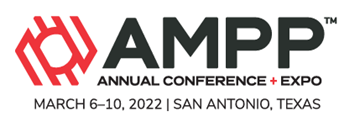Search
Products tagged with 'ships'
View as
Sort by
Display
per page
(Surface Prep) Power Tool Surface Preparation in Shipyards
Product Number:
64-COAT_DEC21
Publication Date:
2021
$20.00
15.5-Year Inspection Reveals the Effectiveness of a Single-Coat Epoxy
Product Number:
51322-17996-SG
Publication Date:
2022
$20.00
51317-9761- Microstructural influences of corrosion sensitization in Al 5XXX series aluminum alloys
Product Number:
51317-9761-SG
Publication Date:
2017
$20.00
Corrosion Control Knowledge Sharing Network: Fighting the War on Corrosion from Multiple Fronts
Product Number:
41213-770-SG
Publication Date:
2013
$20.00
Evaluating Hull Coatings for Precise Impact on Vessel Performance
Product Number:
41206-269-SG
Publication Date:
2006
$20.00
Green Energy Conservation of DoD Ships and Offshore Platforms
Product Number:
41209-495-SG
Publication Date:
2009
$20.00
Holiday Detection by Imaging Fluorescent Coatings
Product Number:
41206-245-SG
Publication Date:
2006
$20.00
Latest Developments with Solvent-Free Epoxy Coatings
Product Number:
41205-213-SG
Publication Date:
2005
$20.00
Modernizing Shipbuilding with Blast and Paint Facilities: General Dynamics NASSCO redesigned its shipyard and operations to become a US leader in shipbuilding.
Product Number:
41213-796-SG
Publication Date:
2013
$20.00
National Shipbuilding Research Program Surface Preparation and Coatings Panel 2018 Update
Product Number:
51218-140-SG
Publication Date:
2018
$20.00
National Shipbuilding Research Program (NSRP) Surface Prep and Coatings (SP&C) Panel Project: Final Report: Reducing Inspection Costs Using the Latest Digital inspection Tools
Product Number:
51216-019-SG
Publication Date:
2016
$20.00












